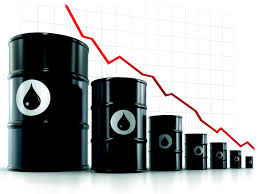Let’s flash back to around 2010.
Oil prices were spiking. They surpassed $100 per barrel of crude. The price of gasoline also skyrocketed. It passed $4 per gallon in some parts of the country; it got nearly that high in the Texas Panhandle.
Who got the blame? President Barack H. Obama. His congressional critics, namely the Republicans, kept hammering the president over the price spikes. Why, they just couldn’t stomach the idea of watching these gas prices heading into the stratosphere and they had to blame someone. Obama was the target.
Then something happened.
Automakers began making more fuel-efficient cars after they were bailed out partly with federal government stimulus money. Research on alternative energy sources ramped up. Other oil-producing nations’ economies began to falter, diminishing demand on fossil fuels around the world.
The price of oil today is less than $40 per barrel, less than half of where it was five years ago. The price of gasoline? Today in Amarillo, regular unleaded is being pumped at $2.26 per gallon in most stations.
Is the president getting the “blame,” let alone the credit, for any of this?
Not on your life.
How come?
